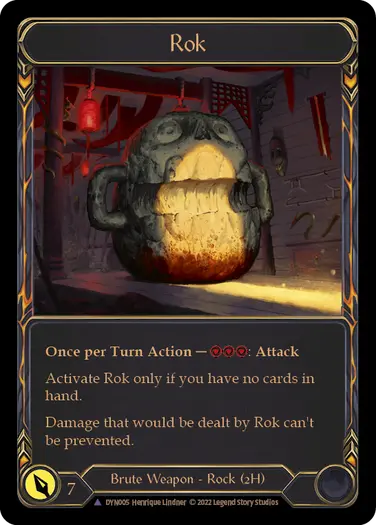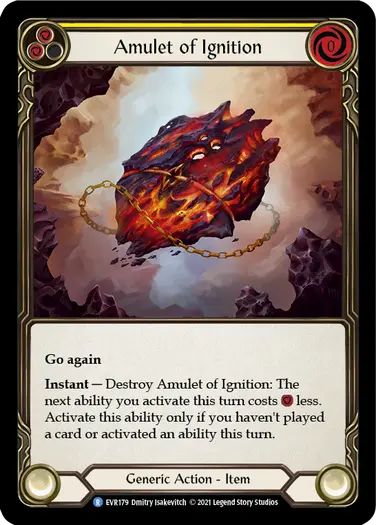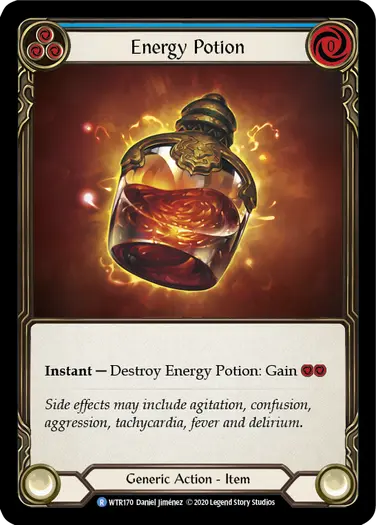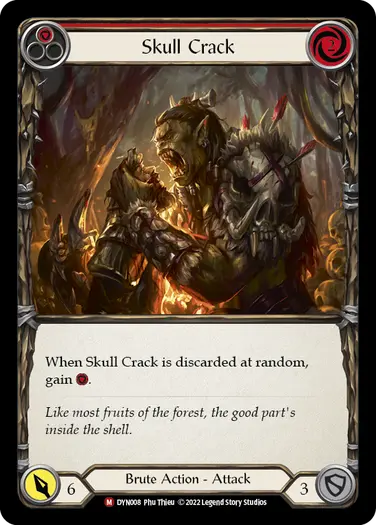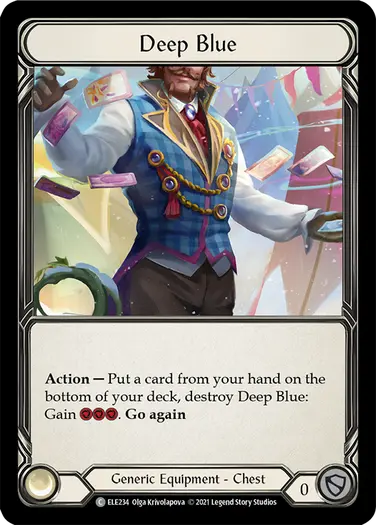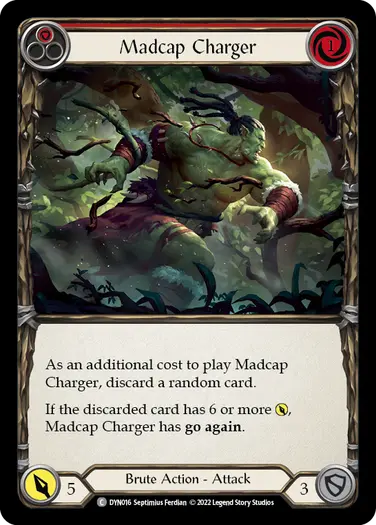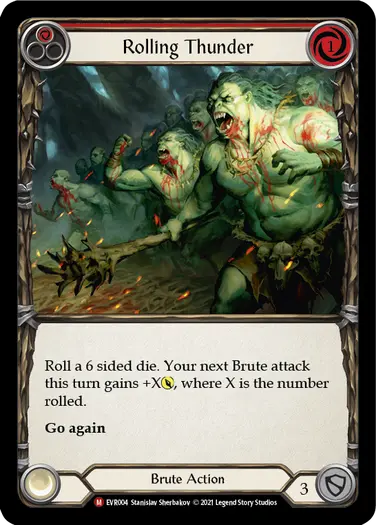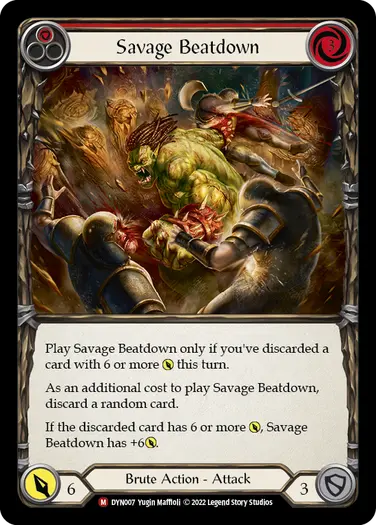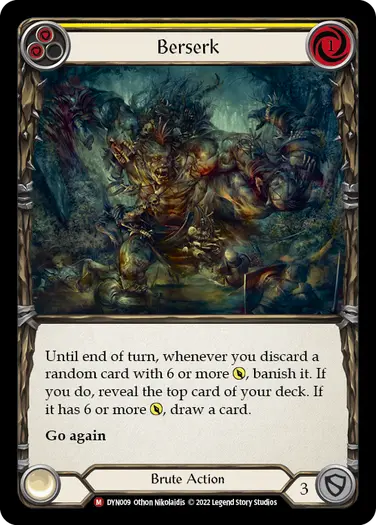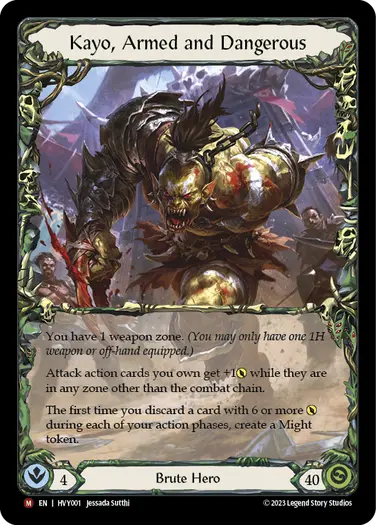Legend Story Studios developer Karol lifts the curtain of the Dev Room so we can take a peek behind the scenes. Learn about the work that went into designing, testing, and evolving the iconic cards you know and love today. Sometimes all a card needs to be great is a Dev Touch!
Today, I’m going to talk about one of my favourite weapons in the game—Rok.
To set the scene, let me take you back more than three years ago to where it all began—the development pipeline of Dynasty. The set was unique in many ways and posed a lot of challenges for the development team. We introduced an entirely new class in the form of Assassin, created the first dual-class hero with Emperor, Dracai of Aesir, and reimagined each existing class through the introduction of new themes and alternate angles on how they could approach deckbuilding. Most importantly, we aimed to design these alternate strategies in ways that could scale into the future. A big part of that vision was realised through the Relics of War—a unique set of weapons featured in the Imperial Palace, all of which had unique Marvel versions. Rok was one of them.
As a studio, Dynasty also marked a time of noticeable growth. Each department introduced new talented hires—the development team specifically nearly doubled in size across less than a year. The set tested our internal processes to work effectively with an expanded team but also created unique opportunities for people to show off their chops, particularly in design. One of the people that took up the mantle to make design contributions to Dynasty was Sasha Markovic. His design approach has often reflected out-of-the-box thinking, and my favourite example of that has to be Rok.
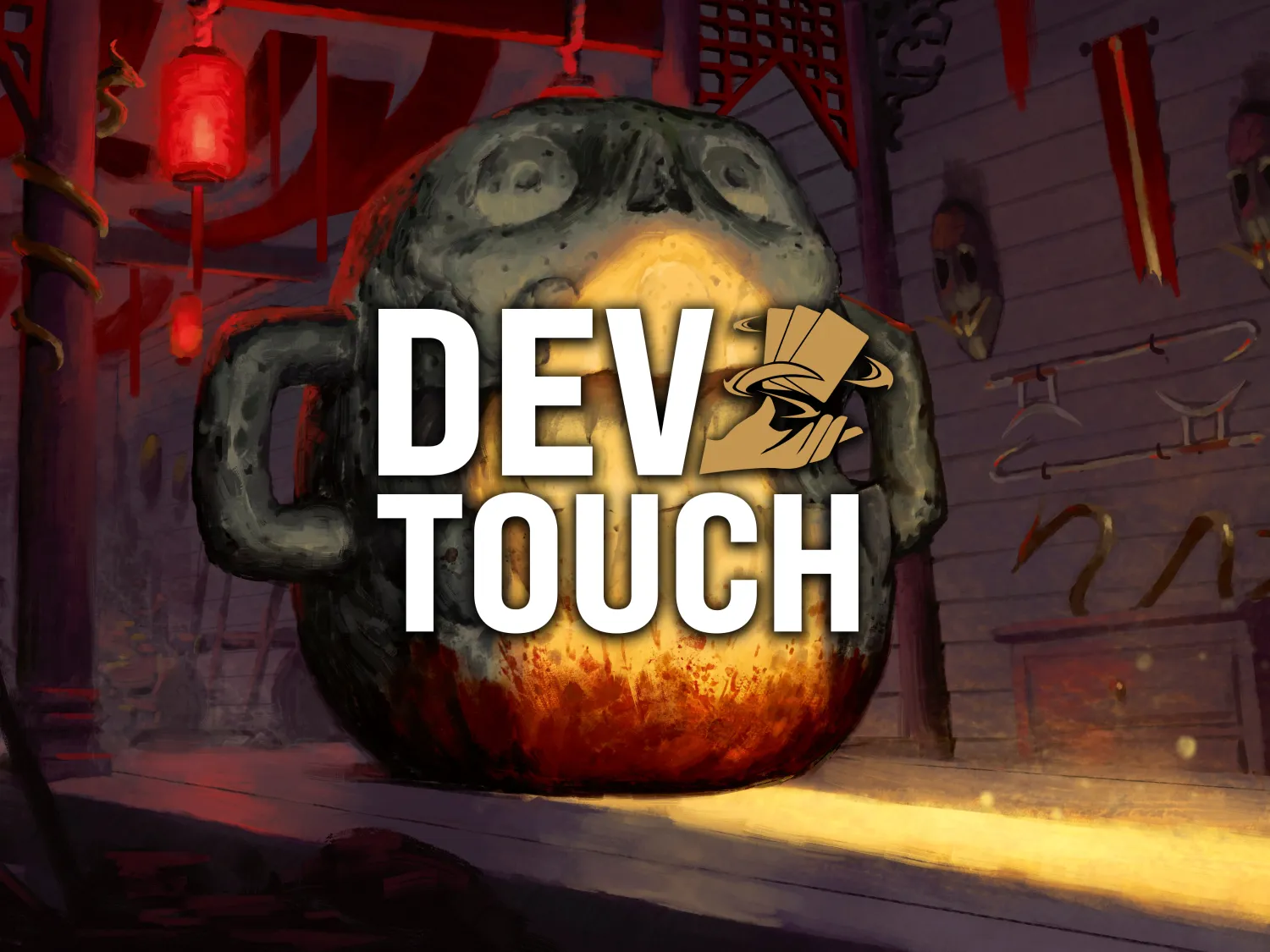
When I first read Rok, I probably had the same reaction as many of you—“Wait, what?”
How does this thing even work? Can you just pitch a blue and attack with it? A 1-card 7-power is busted… but how often can this thing realistically attack?
And as soon as the puzzle becomes clear, the fun begins.
The weapon dictates the entire deckbuilding process. It’s not something you can just slap into any Brute deck and hope for the best. For me personally, it embodied what a supplementary card should be—something that takes you on a journey within a class and opens up a whole new dimension of how it can be played. But before Rok was given the green light, there were definitely areas of concern we had to address.
Power Level
First, we had to establish Rok's power level. A consistent 7-power swing, especially off a single card, felt egregious. We pushed Rok decks to their limits, with all existing enablers of a Rok swing. Fyendal’s Spring Tunic, Amulet of Ignition, Energy Potion, Skullcrack discards, and even Deep Blue were considered to see how smoothly Rok could be incorporated into an existing Brute gameplan. We tried them all.
And very quickly into testing, we all came to the same conclusion:
Rok is a meme.
It posed no threat to the competitive scene. If anything, in its current environment, it was too underpowered to make a competitive impact.
But… it was hella fun.
There was something refreshing about building Rhinar or Levia with an entirely new deckbuilding lens. We searched for 1-cost go again attacks like Madcap Charger or 1-cost enablers like Rolling Thunder, played higher blue counts, and tried every edge case we could think of. Even though we were losing game after game, the raw satisfaction of swinging Rok once in a while kept us coming back. It wasn’t consistent and it often clashed with other powerful Brute synergies, yet many of us developers were growing fond of this boulder.
Thematic Strength
Beyond the mechanical puzzle, Rok’s flavour was deeply compelling. The simple rules text conveyed a surprising thematic depth. My interpretation was this:
A Brute has to be really dumb to try to pick up this huge rock, but also needs a lot of energy to actually make it happen. You need to clear your mind completely before attempting such a task, and even then, it’s extremely taxing.
The “damage can't be prevented” clause always sends my mind to a battle against an Illusionist—carefully crafting mirages to trick and distract the Brute, only for them to be completely ignored as a very real boulder crashes through all of it, inflicting real damage.
And let’s be honest—it’s a rock called Rok. It’s thematic as hell.
Development Hurdles
Despite its growing cult following internally, Rok had three major factors going for it that made it hard to confirm it for print:
- Thematic cohesion within the set
Each class card group in Dynasty had a unifying theme. Ninja introduced Crouching Tigers and associated payoffs. Wizard had the surge mechanic.
The Brute map went through multiple iterations and finally settled on random discard and random discard payoffs, with Savage Beatdown being the perfect encapsulation. It required you to have randomly discarded a 6-power card and then discard one again to unlock its bonus.
As that theme crystallized, Rok stood out like a sore thumb. Why would this rock synergize with cards like Savage Beatdown? Shouldn’t it reward random 6-power discards too? - Power level and meta impact
Rok wasn’t particularly competitive. It would’ve been easier to justify its inclusion if it had at least niche value in a specific metagame—say, against a ward-heavy Illusionist meta. But even in those cases, Rok probably still wasn’t the best tool for the job. - Future-proofing
Finally, Rok had to pass the future-proofing check. There are instances, in which cards in Flesh and Blood are balanced at release but break later when support emerges.
Berserk is an example of one of these—on release, it was interesting as a standalone card in Dynasty, but future support in the form of Kayo, Armed and Dangerous gave it too much of a reliable fuel source, and it became problematic.
With Rok, we had to ask: If a future hero could throw Rok every turn, would it break the game?
And yet... something about Rok captivated us.
Its unique wording...
Its deckbuilding puzzle...
Its hilarious yet perfect theme—nothing more Brute than hurling a massive rock at your opponent.
All of the previously mentioned hurdles were sound and, logically speaking, leaned towards Rok not being a good fit. However, both Mandible Claw and Romping Club already provided solid support to the Dynasty Brute theme—Rok provided something unique. It also helped that over time other classes in Dynasty also faced similar conundrums, so our approach for the theme cohesion loosened up as the pipeline progressed. And we just hoped that the Brute fans would fall in love with Rok, just as we did internally, despite it not being amazingly strong at release.
As for future-proofing, there was that looming concern that one day there would be some way or someone that would pick up the Rok and hurl it with ease, almost every turn even. But maybe it was okay for a Brute to be strong. Maybe it was okay for them to smush their opponents. Whoever they might be, one thing was clear—they’d definitely be one tough nut!
